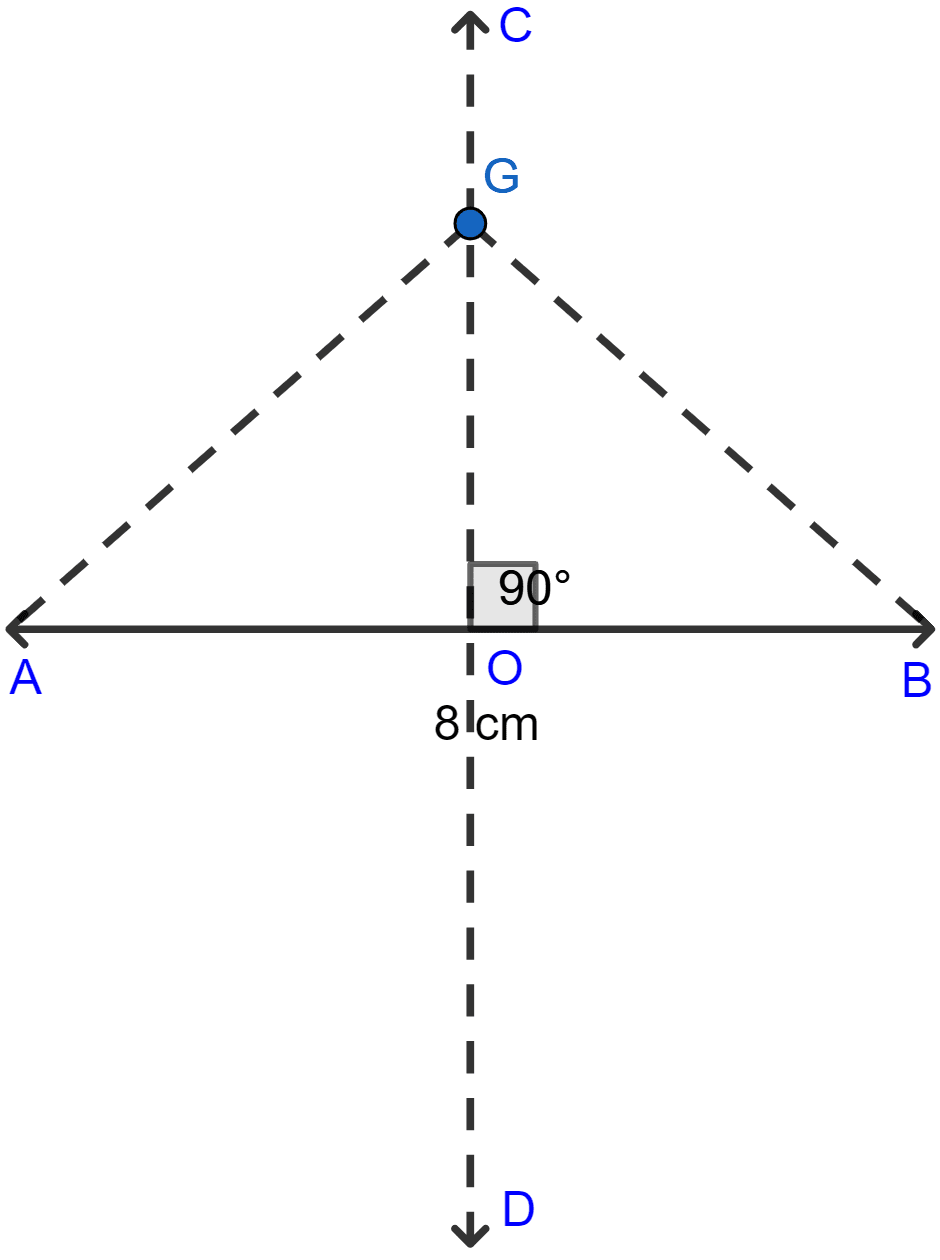Mathematics
Draw a straight line AB of length 8cm. Draw the locus of all points which are equidistant from A and B. Prove your statement.
Locus
11 Likes
Answer
We know that locus of point equidistant from two points is the perpendicular bisector of the line segment joining them.
From figure,

CD is the locus of all points which are equidistant from A and B.
Proof :
Consider △GOA and △GOB.
∠GOA = ∠GOB (Both are equal to 90°)
OG = OG (Common side)
AO = OB (They are equal as CD bisects AB at O).
Hence, by SAS axiom △GOA ~ △GOB.
Since triangles are similar, hence the ratio of their corresponding sides are equal.
Hence, proved that AG = BG. Thus proved that any point on CD is equidistant from A and B.
Answered By
3 Likes
Related Questions
Use ruler and compasses only for this question. Draw a circle of radius 4 cm and mark two chords AB and AC of the circle of length 6 cm and 5 cm respectively.
(i) Construct the locus of points, inside the circle, that are equidistant from A and C. Prove your construction.
(ii) Construct the locus of points, inside the circle, that are equidistant from AB and AC.
Ruler and compasses only may be used in this question. All construction lines and arcs must be clearly shown, and be of sufficient length and clarity to permit the assessment.
(i) Construct a triangle ABC, in which BC = 6 cm, AB = 9 cm, and ∠ABC = 60°.
(ii) Construct the locus of all points, inside △ABC, which are equidistant from B and C.
(iii) Construct the locus of the vertices of the triangles with BC as base, which are equal in area to △ABC.
(iv) Mark the point Q, in your construction, which would make △QBC equal in area to △ABC, and isosceles.
(v) Measure and record the length of CQ.
A point P is allowed to travel in space. State the locus of P so that it always remains at a constant distance from a fixed point C.
Draw a line segment AB of length 7 cm. Construct the locus of a point P such that area of triangle PAB is 14 cm2.